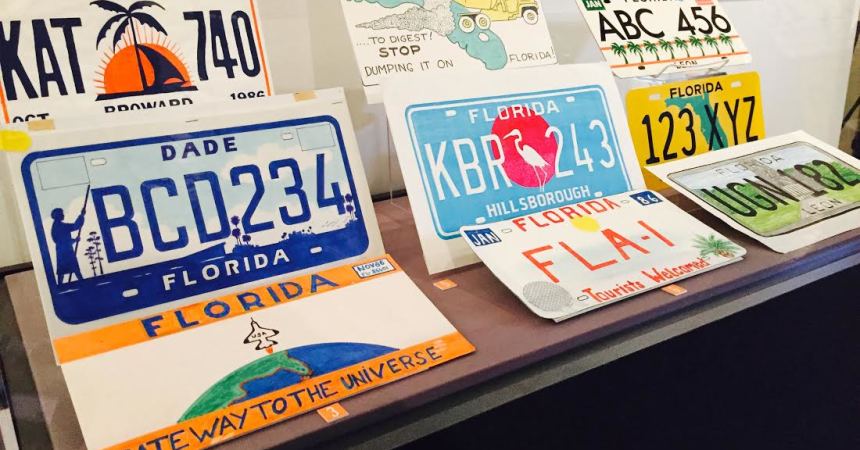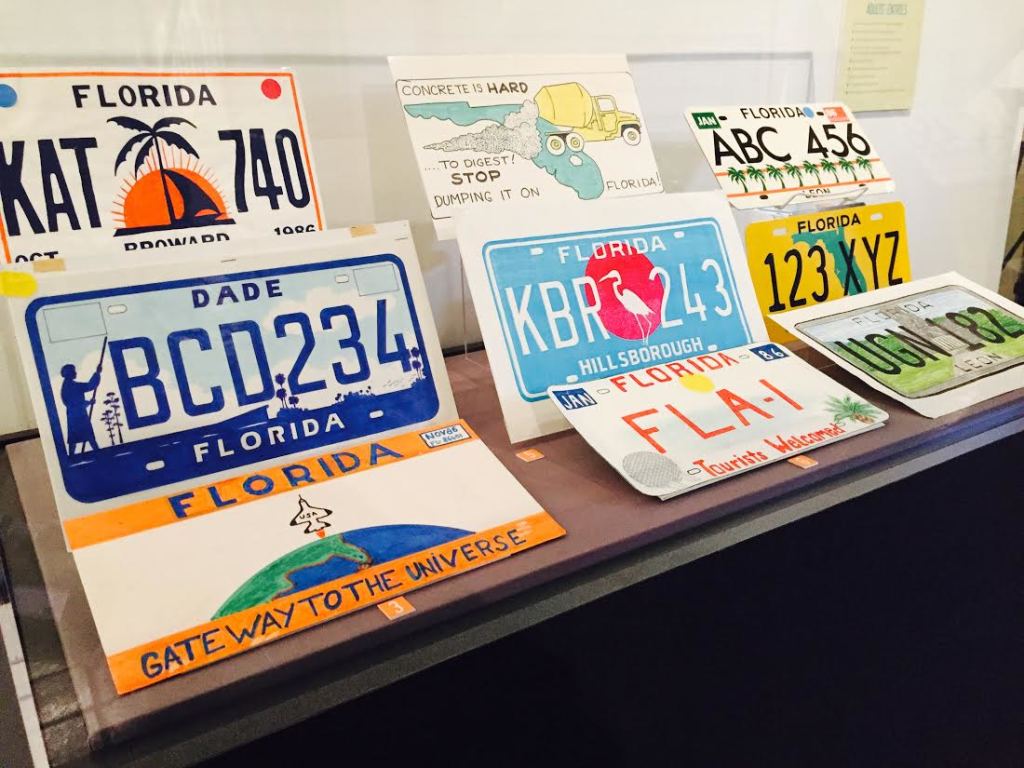
Redesign of Florida License Plate Lives on, History
By LaDarius Calhoun
Outlook Writer

Nine thousand submissions to the Florida License plate redesign sit on dispaly in the exhibit at the Florida Capitol Historic Museum.
Photos by LaDarius Calhoun
The panhandle and two orange blossoms bloom on Florida’s current license plate design as it travels around the country reminding people of the sunshine state.
The Florida Capitol Historic Museum opened up the Florida license plate exhibit on May 28, just 30 years after the state was in need of a new license plate design.
In 1985, the state launched a contest which gave people a unique opportunity to submit their artwork for the redesign of the state’s license plate. Those submissions were to be considered for a new license plate design.
The Legislature passed a law that mandated motorists purchase a new license plate every five years, and Florida needed a new design beginning in 1986.
This contest drove people to submit artwork that expressed what they thought Florida represented. Some license plate submissions displayed pollution, alligators, water, the space shuttle, the sun and more artistic ideas of what the artists depicted of Florida.
The 1985 contest is one of the museums summer exhibits as it displays several of the designs from the collections of the State Archives of Florida.
People sent in letters and explained to the state how the redesigning of the license plate made them feel. Some letters voiced what they thought the new design should look like.
Cruz Jimenez, Jr. wrote a letter in reference to the television show “Miami Vice.” Jimenez suggested that the new Florida tag incorporate the colors of the Miami Vice logo — turquoise and pink — to attract tourists and those who visit Florida for its hot weather.
Jimenez believed that they would be attracted to the state by the license plate colors as they might “see our warm and exotic tags and yearn to bask on our warm beaches and partake in our sophisticated cosmopolitan night life.”
Thousands of submissions were sent in to the Florida Department of Highway Safety and Motor Vehicles (FDHSMV) office.
Teachers became really creative for the contest and made it a class project, said Lisa Barton, the exhibit manager with the Florida Historical Capitol Museum.
The FDHSMV received more than 3,500 submissions from people all across Florida as they expressed their love for Florida.
“It’s so interesting because so many people cared,” Barton said. “So many people shared ideas of how Florida will be represented all over the world.”
The cabinet, which included then-Governor Bob Graham, brought in six independent judges to view the submissions for the new design. Once the submissions had been narrowed down to six finalists, the winning finalist design was decided by the cabinet.
The state decided to keep the Florida license plate design similar, inversing the colors from orange text, to green text with the addition of two orange blossoms, which is what we see today on the back of Floridians cars.
The 1985 contest did bring along change. A lot of the designs became specialty tags. One of the first specialty tags is the Florida manatee tag.
Whatever tag drivers choose, they continue to represent the sunshine state.
“I chose to purchase a Florida Gators specialty tag, not only because it’s my alma mater, but because it represents Florida in another significant area — our great institutions of higher education,” said Toccara Verneiul, a Florida resident of 30 years.
To find out more on the Florida License Plate Contest, stop by the Florida Capitol Historic Museum where you can design your own Florida license plate.







